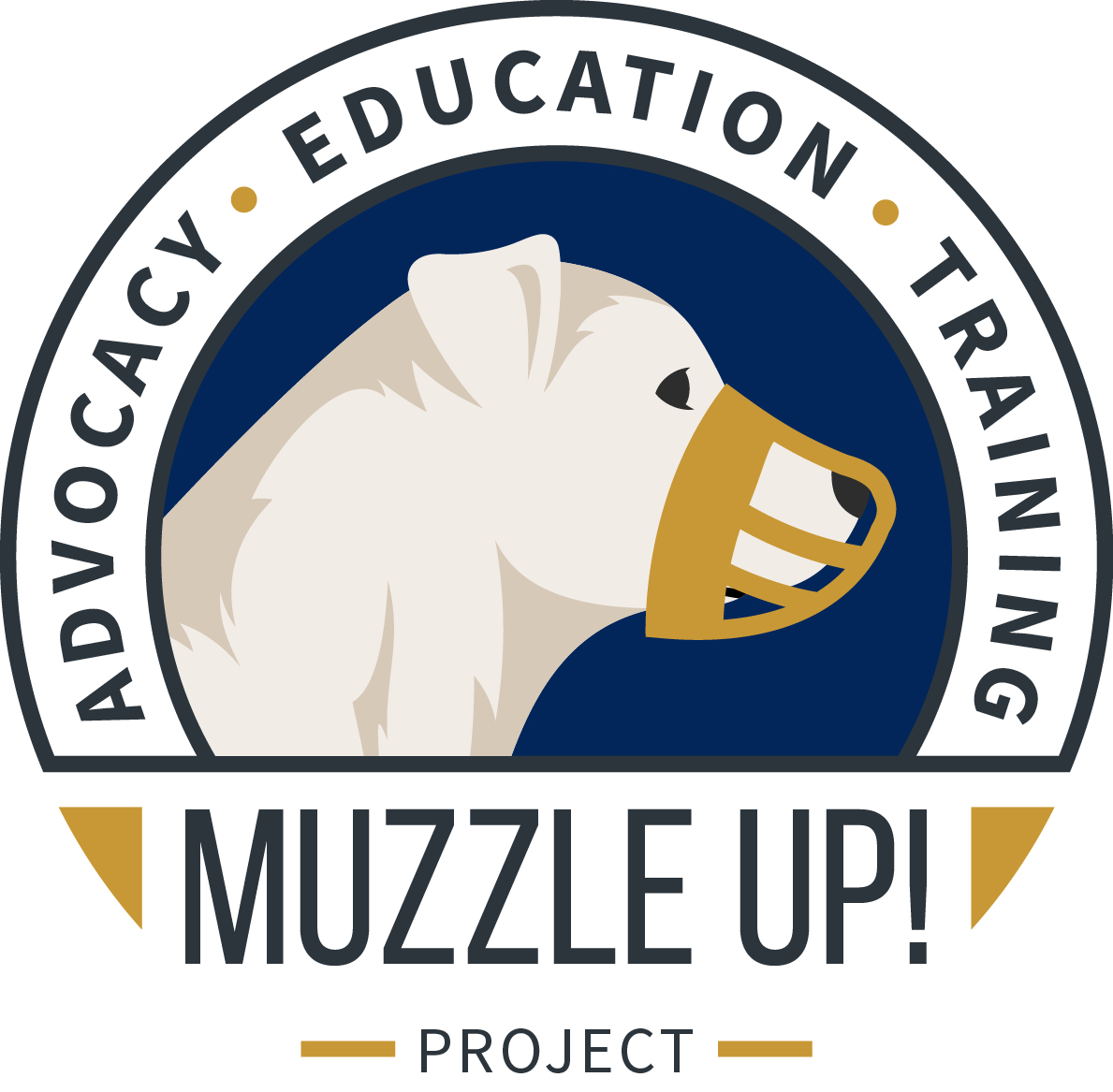When a client reaches the point in their muzzle training where they can buckle the strap on the muzzle and the dog is comfortable, we begin incorporating activities with movement: Target games, fetch, puzzle toys, and basic training cues. Focusing on movement in the training plan helps the dog learn how to move with a new object on his face, and keeps frustration levels low.
We choose activities based on what the dog enjoys and and what he needs help with. Does he have difficulty moving his head to the side? Hand targeting is a great option. Does he struggle sniffing and picking treats up off the ground? Puzzle toys of gradually increasing difficulty will help him learn how to do these things while wearing his muzzle.
My philosophy when it comes to muzzle training, and all training for that matter, is to keep frustration levels low and help dogs adapt to the training environment instead of waiting for the frustration to manifest and then punishing or ignoring the resulting behavior (pawing or rubbing at the muzzle, etc). Less reactive, more responsive.
The next step in the muzzle training plan is more difficult and often ignored: Cultivating calm and relaxation. This parameter’s difficulty varies on a dog’s temperament and the reasons why he needs to wear a muzzle. If he’s going to wear the muzzle during a trip to the vet or groomer, or if he’s going to experience any down time either indoors or outside, it’s important to help him learn how to stay still and relax while wearing the muzzle.
For many dogs, “staying still” is not intuitive or easy, particularly when adding a new element to the environment. Not to be confused with the absence of behavior, which indicates a dog is shut down and fearful, staying still indicates a dog can settle on a bed or comfortably hold a down-stay. The dog isn’t stiff or stressed, he’s relaxed and focused.
The following are tips to help you cultivate calm with your dog during muzzle training:
- Introduce a sit- or down-stay. Keep the duration short in the beginning to avoid frustration, gradually increasing duration as your dog is able. If you see any pawing or rubbing of the muzzle, back up to an easier place in the training plan.
- Give your dog a massage while he lies on his bed. Find those places that help his muscles turn to butter. Reward intermittently with food. If you see any pawing or rubbing of the muzzle, reduce duration and feed more frequently.
- Intersperse your training with periods of activity followed by calm. For example, spend five minutes playing targeting games and then ask your dog to do a brief down-stay. Then return to the targeting game, followed again by a stay or settle. This reduces frustration when cultivating calm and also teaches your dog how to settle after an exciting activity.
- Start practicing behaviors that will help your dog at the vet or groomer. Examples include chin rests, offering a paw or leg for light restraint, and holding a standing position.
